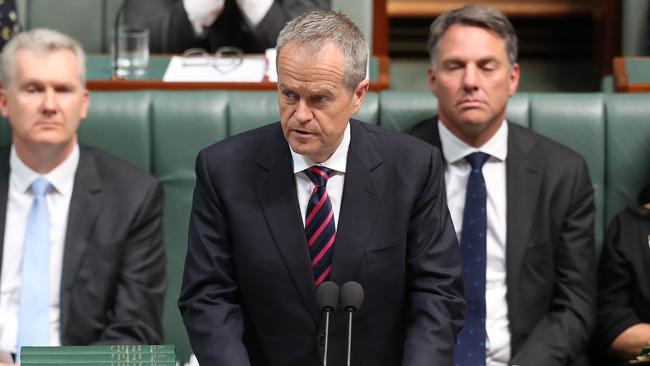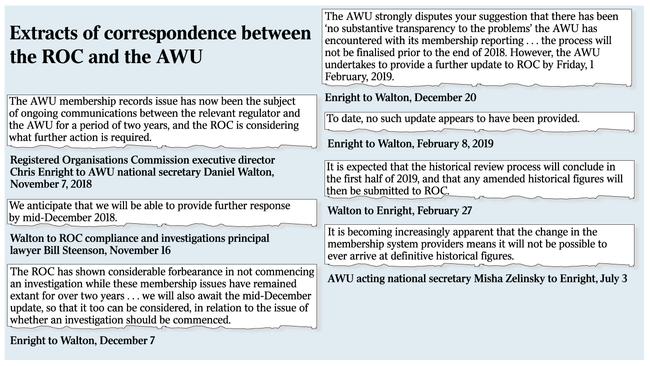Shorten’s union faces probe over inflated membership numbers
The union behind Bill Shorten’s rise to power has been threatened with a probe over inflated numbers.

The union behind Bill Shorten’s rise to power in Labor politics has been threatened with a formal investigation after vastly exaggerating its membership numbers, and then refusing to hand over internal audit figures.
The Registered Organisations Commission, the nation’s regulator of union governance, has warned the Australian Workers Union that its patience is running out following repeated delays and a lack of co-operation in meeting legal reporting obligations.
Wrangling between the ROC and AWU has reached a new low point, with the union’s leadership now admitting that “it will not be possible to ever arrive at definitive historical figures”. An internal AWU membership audit dating back to 2009 was forced on the union last year, as first reported by The Australian, after it had resisted an external audit.
ROC doubts about the accuracy of AWU records over a decade were sparked by preliminary analysis confirming the union’s membership in 2017 was 69,786 — down 50 per cent on the 139,329 declared just five years earlier.

The halving of AWU membership numbers over such a short period raised questions not only about the union’s accounting practices and transparency, but the real strength of Mr Shorten’s right-wing union powerbase over many years if it was exaggerated.
After serving as the AWU’s national and Victorian secretary, Mr Shorten continued to rely on his former union for key political support when he was elected to federal parliament in late 2007 and rose to the top of his party.
ROC executive director Chris Enright expressed dismay at the “integrity of AWU membership data” and delays in rectifying the problem in July last year, during a steady flow of correspondence with current AWU national secretary Daniel Walton.
Mr Walton, who was not the AWU’s leader when membership levels were inflated, advised Mr Enright in September that all union branches had been told to extend their membership reviews back to 2009, as the ROC wanted.
By November, with no results forthcoming, Mr Enright said the issue had been running for two years and the ROC was considering further action.
Mr Walton replied that the AWU “anticipated” responding in mid-December, prompting Mr Enright to say the regulator had shown “considerable forbearance in not commencing an investigation”.
When Mr Enright reminded Mr Walton in February this year that the AWU had again failed to submit anything, the union flagged another delay.
“It is expected that the historical review process will conclude in the first half of 2019, and that any amended historical figures will then be submitted to the ROC,” Mr Walton said.
Six months later, on July 3, the acting national secretary in Mr Walton’s place, Misha Zelinsky, advised Mr Enright: “It is becoming increasingly apparent that the change in the membership system providers means it will not be possible to ever arrive at definitive historical figures.” Mr Enright agreed to Mr Zelinsky’s request for a meeting, but said he wanted to “fully understand” the failure to provide accurate figures dating back to 2009.
He questioned the AWU’s continued refusal to hand over a report by its membership auditor or other information that could explain exaggerated figures.
The AWU is deeply involved in other legal battles with the ROC. Former Victorian AWU secretary Cesar Melhem will face court next month over alleged misconduct when he led the branch.
The AWU is also awaiting a Federal Court ruling on its attempt to block ROC access to documents seized in a union raid two years ago for the regulator’s investigation into the authorisation of AWU donations to GetUp and Labor candidates when Mr Shorten was the union’s leader.




To join the conversation, please log in. Don't have an account? Register
Join the conversation, you are commenting as Logout